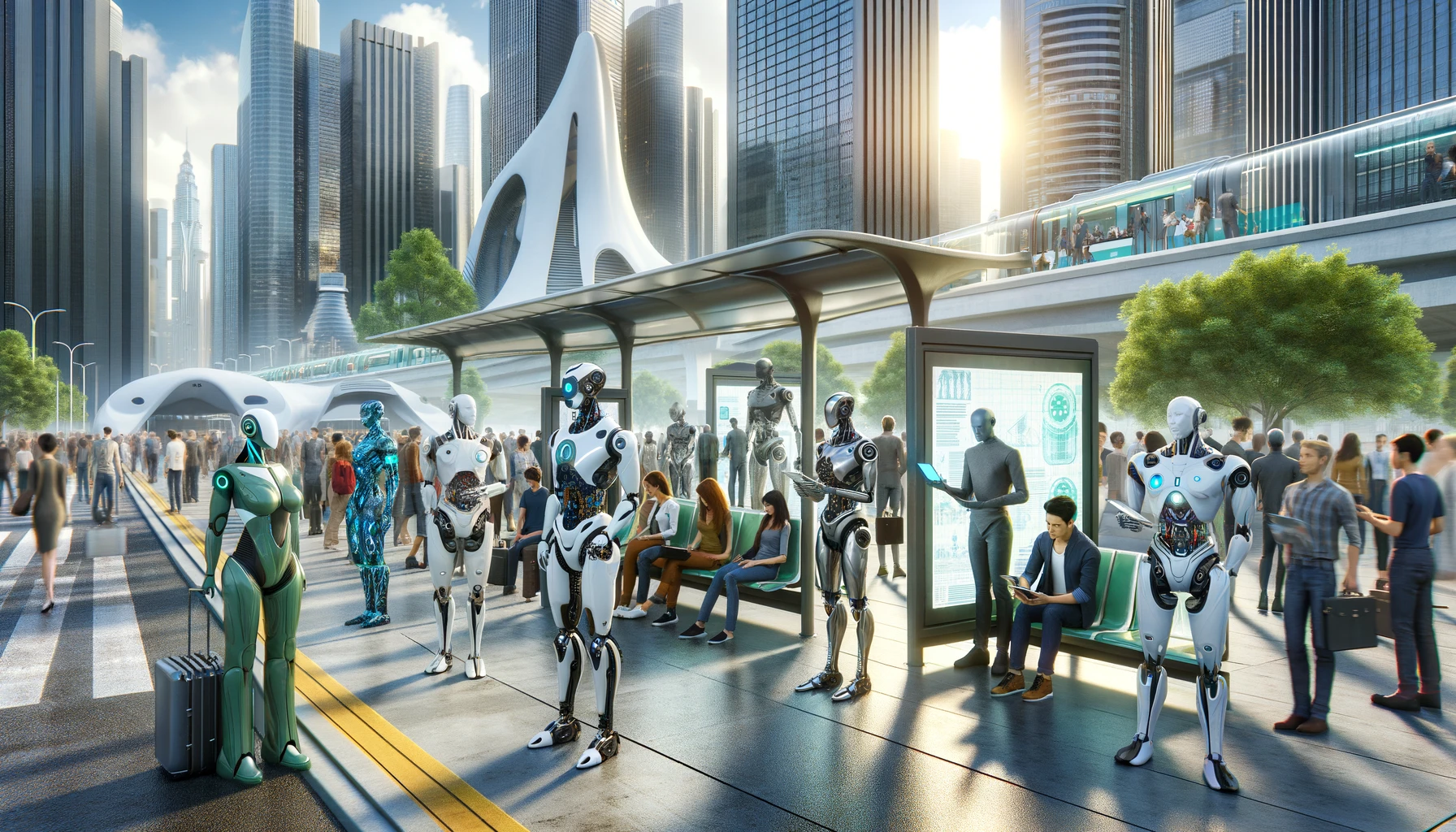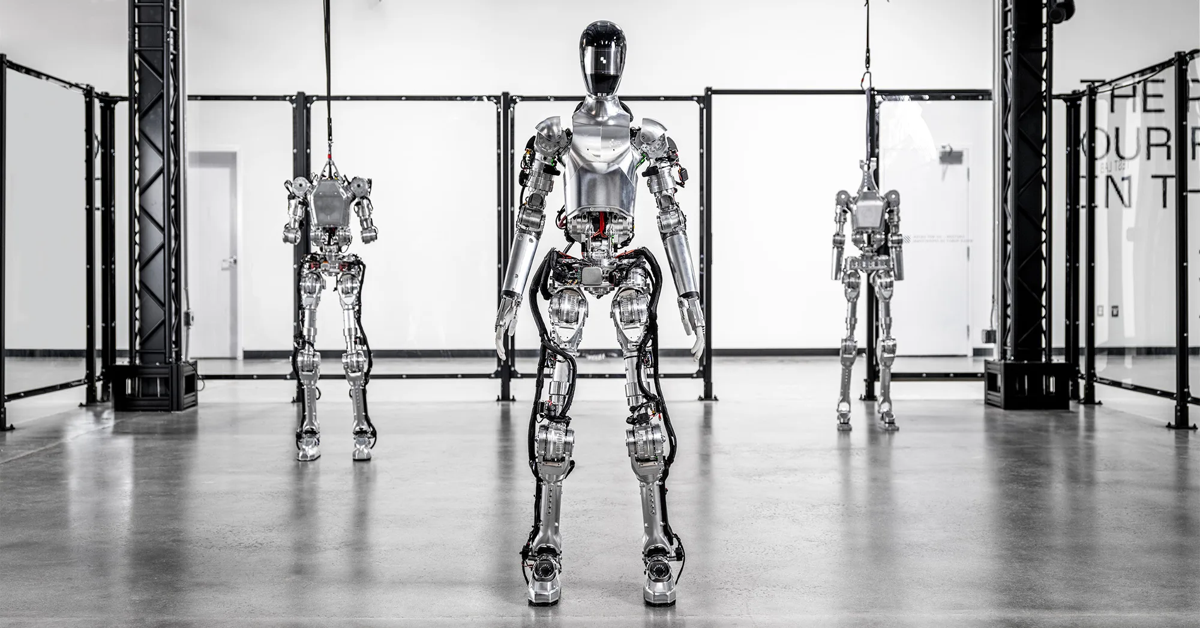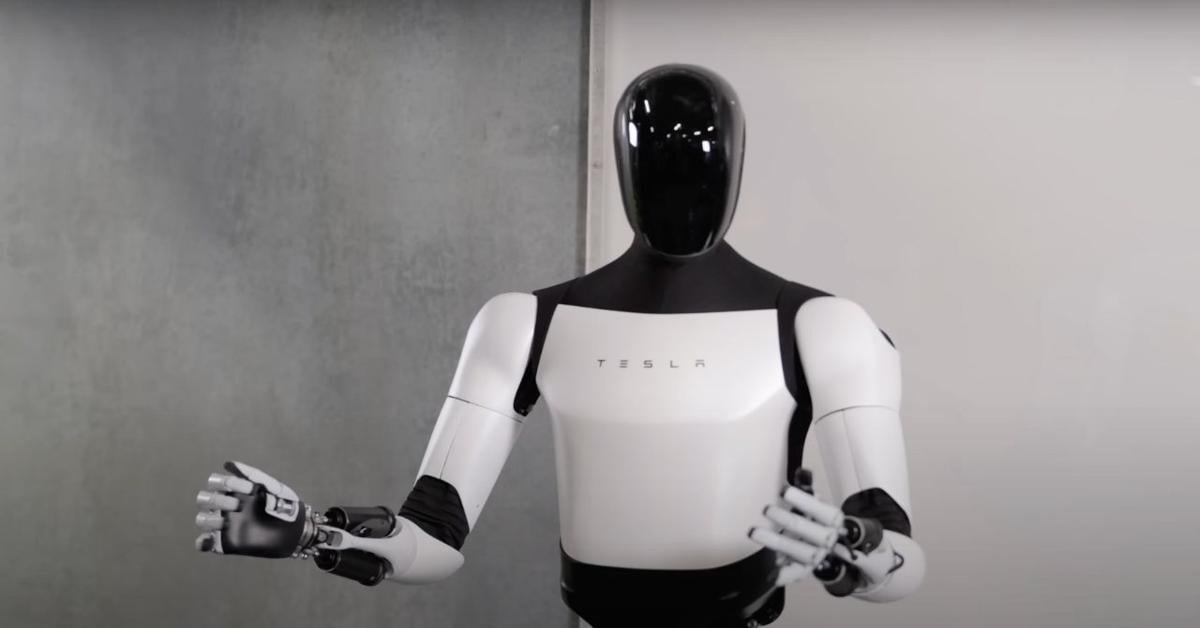
We’ve been talking about robots for decades, so why are we seeing an explosion now?
Originating from the Czech term for “forced labor,” the term "robot" was first coined in 1921 in Karel Capek’s influential play R.U.R., or Rossum's Universal Robots. These early robots, eerily resembling humans, set a precedent that still echoes in popular culture, from the menacing Terminator to Star Trek’s Mr. Data, to the endearing Bicentennial Man.
Defining a “robot” is a task as complex as the intricate technology behind it.
Although interpretations may vary, most experts concur on a basic outline:
“A robot is a physically embodied machine, endowed with intelligence, that can operate tasks with a degree of autonomy and can sense and manipulate its surroundings.”
While the term robot has been applied across a wide range of self-contained systems—from a Roomba to a Tesla car—for the next few blogs in this series, I’m going to focus on one class of robot, specifically those that look like and move like human beings: humanoid robots.
In today’s blog, I’ll discuss the driving forces finally making humanoid robots a reality and share a few predictions for just how big this market can get.
Let’s dive in…
NOTE: Discussing the latest developments in humanoid robots is a key area of focus at my private Abundance Summit next month. Applications close and we go to Waitlist Only on February 27, 2024. Learn more and apply here.
Humanoid Robots are Finally Arriving: Why Now?
The dream of humanoid robots has seen a few valiant attempts over the decades.
In the 1960s, Silicon Valley-based SRI International unveiled “Shakey,” basically a tall tower of electronics and cameras on wheels. Shakey, despite its shaky demeanor, was revolutionary. With a built-in camera and bump sensors, it was the first mobile robot with the ability to perceive and reason about its surroundings.
Life Magazine referred to Shakey as the “first electronic person” in 1970.
Fast forward to the October 2000, when Honda’s charming ASIMO made its debut. Looking a lot like a teenager dressed up as a 1950s era astronaut (think big bubble white spacesuit), ASIMO was an international celebrity.
He’d rung the bell to open the New York Stock Exchange, conducted the Detroit Symphony Orchestra, and walked the red carpet at a half-dozen movie premieres.
In April of 2014, during President Obama’s visit to Japan, ASIMO greeted the President in English: “Mr. President, I am ASIMO, a humanoid robot. It is a pleasure to meet you.”
ASIMO then went on to demonstrate some of its signature moves including running, kicking a ball, and jumping.
But despite these early attempts at bringing to life viable humanoid robots, these early iterations were expensive and only slightly useful.
It’s only now, driven by major advances in sensors and actuators, battery technologies and artificial intelligence, that a new generation of useful and affordable robotic labor is within reach.
And this time it’s different, very different.
This next generation of AI-driven robots won’t be one-off demo units show-boating for the media, or hyper-specialized logistic bots scurrying around Amazon fulfillment centers, but a mass-manufactured cohort of mechanical humanoids numbering in the tens or hundreds of millions, walking and working side by side with all of us in our homes and places of work.
What’s changed in the past couple of decades to enable the coming robotics revolution?
Lots.
Here are just a few of transformations worth pointing out, driven to a large degree by both the smartphone and automotive industries.
First, on the hardware side, one great example is LiDAR, or Light Detection and Ranging sensors. Originally big, bulky, and expensive, LiDAR uses laser pulses to measure distance and create 3D point clouds of the surrounding environment.
A decade ago, a LiDAR unit cost about $100,000 and was the size of a coffee-can, Today, they’ve shrunk down 1000-fold and suppliers like Luminar have reduced the cost 100-fold, supplying units to carmakers today for $1,000, with a goal of $500 in the next few years. (NOTE: Austin Russell, the founder of Luminar and the world’s youngest self-made billionaire, will be joining me at next month’s Abundance Summit.)
Second, in the realm of software, it’s all about advances in AI. The same breakthroughs that have enabled applications using GPT-4 to see, listen and speak, are now being applied to robotics.
These humanoid compatriots will be equipped with AI-enhanced vision systems, offering precise image recognition, which aids in activities like component sorting and quality checks. AI's predictive capabilities ensure machinery functions efficiently, foreseeing potential malfunctions, hence economizing maintenance.
Generative AI in particular magnifies a robot's adaptability. Using reinforcement learning, they can autonomously refine their operations. This self-improvement, combined with decision-making algorithms, optimizes their actions. Additionally, by mimicking human interactions, be it verbal or non-verbal, they seamlessly blend into sectors like healthcare, fostering trust and collaboration.
Much like humans, including you and me, and our children, who learn through experience, robots utilizing reinforcement learning will gain expertise from their interactions and adjust to new environments.
However, unlike us humans, who are limited in how rapidly we are able share our learnings with fellow humans, highly networked robots can instantaneously exchange a learned skill.
One robot learning how to thread a needle, now means every networked robot using the same operating system can now thread a needle. Ultimately, reinforcement learning and generative AI, coupled with high-bandwidth networking will underpin robots’ ability to assimilate human nature, both physically and emotionally, leading to the creation of ultra-smart, human-like intelligent machines.
So, How Big Can the Humanoid Robot Market Be?
Driving the future demand for humanoid robots is a looming labor crisis due to aging populations.
As older generations retire, notably the U.S. baby boomers (who constitute 29% of the workforce), there are fewer young workers to fill the gaps. By 2030, the U.S. could face a shortage of 2 million jobs in the manufacturing sector alone, as projected by the global banking and investment firm Goldman Sachs.
This crisis isn't confined to the U.S.; Japan too contends with a significant labor shortage, a repercussion of declining birth rates and longer life spans.
Consequently, many sectors, driven by necessity, are expected to lean on robotics to find their solution. A poignant example lies in the security industry: firms like ADT are investing in humanoid robots to manage tasks traditionally performed by human security guards. This shift highlights the changing landscape of labor and the increasing reliance on technology to bridge workforce deficits.
In the rapidly evolving landscape of technological advancements, the prospect of humanoid robots joining our daily lives might no longer be the stuff of sci-fi fantasies. Goldman Sachs released a captivating report in November 2022, painting a bullish outlook on the humanoid robot market.
The numbers?
A staggering projection of over $150 billion in annual revenue within the next 15 years. Investor Cathie Wood predicts that the market for humanoid robots could grow to $1 trillion by 2030.
In December 2023, billionaire venture capitalist Vinod Khosla made this prediction.
“By 2040 there could be a billion bipedal robots doing a wide range of tasks including fine manipulation. We could free humans from the slavery of the bottom 50% of really undesirable jobs like assembly line and farm workers. This could be a larger industry than the auto industry.”
Khosla continues, “In addition, bipedal robots have the capacity to transform every vertical from eldercare to factories & farms. Few are preparing for how this will radically change GDP, productivity, and human happiness. These robots could create enough value to support the people they replace.”
Yet, this projection, as impressive as it might sound, could be dwarfed by another analysis.
Macquarie, another financial juggernaut, suggests an even more ambitious growth trajectory for the humanoid robot market. So, what are the numbers they're talking about?
Hold onto your seats—a mind-bending value of up to $3 trillion by 2050.
Wendy Pan, the machinery analyst for Macquarie Research in Japan, offers insights into this grand vision. According to Pan, as humanoid robots grow more sophisticated, their incorporation in industrial uses will be inevitable.
However, the real game-changer will be the surge in home-based market demand. She draws a compelling parallel between cars and humanoid robots, equating the transformational impact of cars on commute times to humanoid robots' potential to revolutionize housework and daily chores.
An even more compelling prediction comes from serial entrepreneur Brett Adcock, founder of the robotics company Figure. According to Adcock the world might soon be home to a whopping 10 billion humanoid robots—potentially during our lifetime. Which is rather a shocking number, especially when you recognize that the total number of cars on Earth is only about 1.5 billion as of 2023.
However, like any groundbreaking industry, there will be challenges to navigate.
Cost in particular will be a crucial determinant in driving this market's mass-scale adoption. Robohub, a nonprofit robotics organization, provides a perspective on this. They argue that the "holy grail" for humanoid robots would be crafting sophisticated tech under a $50,000 price tag.
This figure isn't arbitrary—it aligns with the annual wage of a single shift of labor at just over $18/hour, resonating with the ongoing labor shortages in low-wage industries.
On the other hand, Macquarie dives deep into the cost breakdown for early-stage humanoid robots. Their estimate? A slightly more optimistic $40,000. With allocations like $10,000 for sensors and chips, $5,000 for torque sensors, and $8,000 for precision reducers, they've dissected the cost matrix intricately.
Why This Matters
As we stand at the edge of this robotic revolution, one thing remains clear, irrespective of the exact numbers and estimates.
The introduction of humanoid robots into our societies will irrevocably redefine the dynamics of human interaction, labor, and daily life. Indeed, we're on the brink of witnessing this transformation unfold.
So, what kind of robots will help us reach this future?
In our next blog, we’ll look at the top humanoid robots and the companies behind leading the charge.
How do you keep up with exponential change?
We will experience more change this coming decade than we have in the entire past century.
Converging exponential technologies like AI, Robotics, AR/VR, Quantum, and Biotech are disrupting and reinventing every industry and business model.
How do you surf this tsunami of change, survive, and thrive?
The answer lies in your access to Knowledge and Community.
Knowledge about the breakthroughs expected over the next two to three years.
This Knowledge comes from an incredible Faculty curated by Peter H. Diamandis, MD at his private leadership Summit called the Abundance Summit. Every year, Peter gathers Faculty who are industry disruptors and changemakers.
Our Faculty this year includes dozens more leaders of this caliber – each bringing our members critically important Knowledge about the future.
But even more important than Knowledge is Community.
A Community that understands your challenges and inspires you to pursue your Massive Transformative Purpose (MTP) and Moonshot(s).
Community is core to Abundance360. Our members are hand-selected and carefully cultivated—fellow entrepreneurs, investors, business owners, and CEOs running businesses valued from $10M to $10B.
Abundance360 members believe that “The day before something is truly a breakthrough it’s a crazy idea.” They also believe that “We are living during the most extraordinary time ever in human history!”
Having the right Knowledge and Community can be the difference between thriving in your business—or getting disrupted and crushed by the tsunami of change.
This is the essence of Abundance360: Singularity University’s highest-level leadership program that includes an annual 4-day Summit, hands-on quarterly Workshops, regular Masterminds, curated member matching, and a vibrant close-knit Community with an uncompromising Mission.
“We’re here to shape your mindset, fuel your ambitions with cutting-edge technologies, accelerate your wealth, and amplify your global impact.”
If you are ready, you can use the link below to apply to become a member of Abundance360 and attend this year's Abundance Summit.
I discuss how humanoid robots will transform society and help create a world of abundance on my podcast. Here’s a conversation I recently enjoyed:
A Statement From Peter:
My goal with this newsletter is to inspire leaders to play BIG. If that’s you, thank you for being here. If you know someone who can use this, please share it. Together, we can uplift humanity.
Topics: Abundance Entrepreneurship Abundance 360



.png?width=331&height=80&name=Layer_1%20(1).png)
-1.png?width=318&height=77&name=Layer_1%20(1)-1.png)





